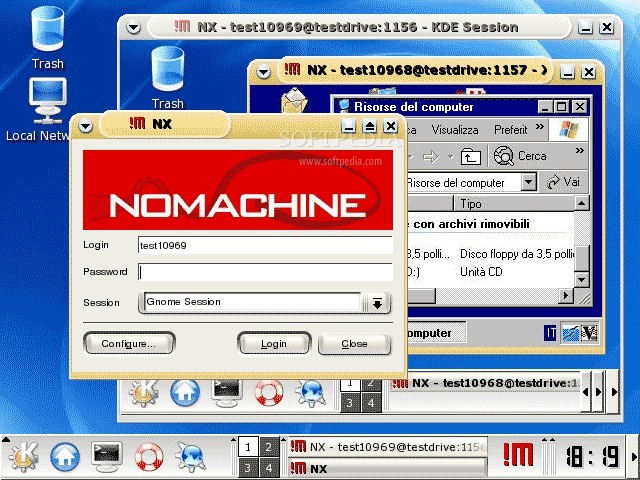

Launch Ubuntu desktop or the server edition and install ubuntu-desktop sudo aptitude install ubuntu-desktopĭownload the Nomachine NX packages for Ubuntu ( ) (versions as of ) wget.Setting up Nomachine NX packages on Ubuntu is now quite easy: Additional Potential Steps for Considerationīeware that the following packages are not free but if you're facing problems with the freeNX packages, it may be a good solution:.But Gtk3 windows got really heavy artifacts on them. And Ctrl - Alt - 0 brings up a menu for changing audio quality, resolution, etc… Bugs So keys like F12 to fullscreen, Ctrl - Alt + Up to switch virtual desktop would work. Which make keys that normally goes to the local window manager instead go into the remote session. My remote KDE desktopĬtrl + Alt + F will expend the window into fullscreen. OpenGL and audop should also be working too. NoMachine could be launched with sudo /usr/NX/bin/nxserver -start nxd if systemd didn’t start it. After installing, start both display manager and NoMachine. Arch Linux users could simply use the nomachine AUR package. The steps to NoMachine depends on the distribution.

It’s faster, easier to use and passthrough the audio automatically for you. As much as I want to use an open source server, NoMachine is a far superior solution. But it is quite laggy and audio passthrough have to be done separately. My solution was to use x11vnc and attach it to a working X server. A display manager is required to launch DBus and switch user for us.

Now install your favorite display manager, DE/WM. (Note: virtual display disables physical output) The most common solution is to get a dummy display plug: And you don’t have a screen in a headless setup.

But most remote solutions package themselves with a (most likely some fork of Xvfb) standalone X. First of all, GPU acceleration only work with the real X.org server while the GPU is connected to a monitor. This is easy when working locally with a physical monitor. Having an accelerated desktop running headlessly is a lot harder than I though. Took me a year of on-and-off trial and error to get it right. While I can’t rely on the puny Cortex-A72 cores to draw the entire desktop (it works, but low FPS). But I’ve never got GPU acceleration working properly. It feels really cool to have the exact same desktop anywhere. I have always wanted to setup a remote desktop on my NAS.


 0 kommentar(er)
0 kommentar(er)
